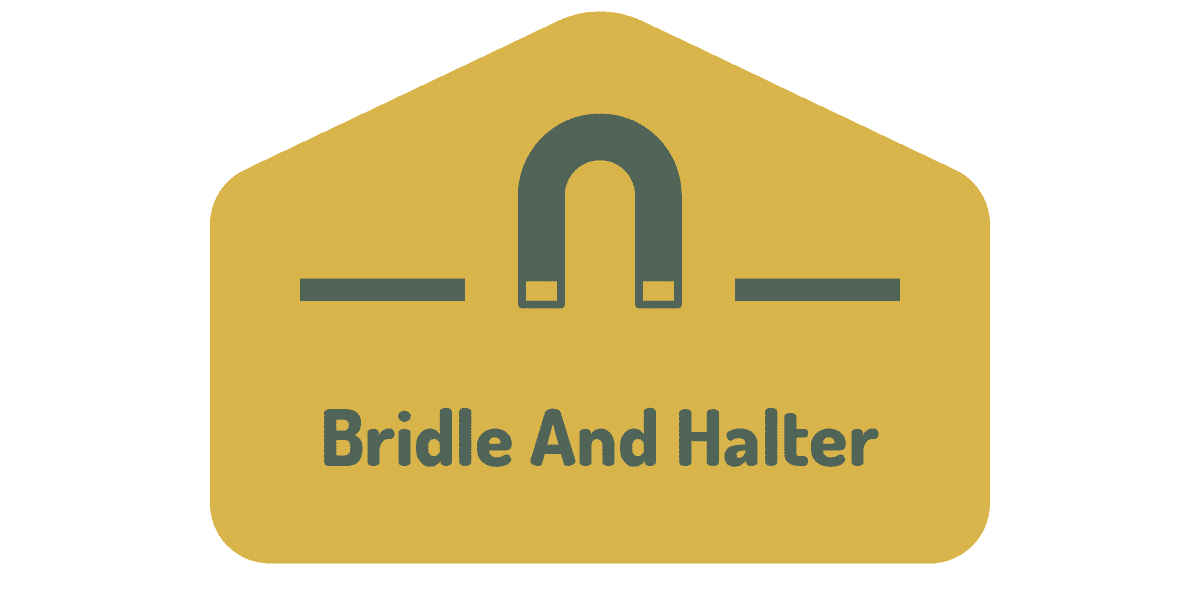
Selecting the right bridle and halter for your horse is a crucial decision that can significantly impact your horse’s comfort, safety, and overall riding experience. Bridles and halters are essential pieces of equipment for any horse owner, whether you’re an experienced equestrian or a novice rider. With a multitude of options available on the market, making the right choice can be overwhelming. In this comprehensive guide, we will explore the factors to consider when choosing for your horse, helping you make an informed decision that benefits both you and your equine companion.
Understanding the Purpose
Before delving into the specifics of choosing a bridle and halter, it’s essential to understand the distinct roles these two pieces of equipment play in the life of your horse.
- Bridle: A bridle is a vital piece of equipment used during riding, driving, or any activity where you need control and communication with your horse’s mouth. It consists of several components, including the bit, reins, and headstall. The bit is placed in the horse’s mouth, and the reins are used by the rider to communicate signals and cues.
- Halter: A halter, on the other hand, is primarily used for handling, leading, grooming, and tying your horse. It doesn’t involve placing any pressure on the horse’s mouth and is usually made of soft materials like leather or nylon. Halters are often used for turnout as well.
Now that we’ve clarified their roles let’s explore how to choose the right bridle and halter for your horse.
Factors to Consider When Choosing a Bridle
- Fit and Comfort: The most crucial factor when selecting a bridle is ensuring a proper fit. A well-fitted bridle should sit comfortably on your horse’s head without causing any discomfort, rubbing, or pressure points. It should be snug but not too tight, allowing for free movement of the horse’s ears, eyes, and mouth.
- Material: Bridles are available in various materials, with leather and synthetic materials (such as nylon or biothane) being the most common choices. Leather bridles are traditional, durable, and tend to improve with age but require regular maintenance. Synthetic materials are often more affordable and low-maintenance.
- Bit Type: The choice of bit is critical, as it directly affects your horse’s comfort and responsiveness. The bit should be selected based on your horse’s training, experience, and any specific requirements. Common bit types include snaffle bits, curb bits, and bitless bridles. Consult with a knowledgeable trainer or equine professional to determine the most suitable bit for your horse.
- Rein Length and Material: The reins attached to the bridle come in various lengths and materials, such as leather or rubber. Consider the type of riding you’ll be doing (e.g., dressage, trail riding, or jumping) and choose reins that provide the right feel and control for your needs.
- Browband and Noseband Styles: Bridles come in different styles with varying browband and noseband designs. Some horses may prefer a wider noseband for added comfort, while others do well with a more minimalistic design. The choice often depends on your horse’s conformation and personal preference.
- Adjustability: Look for a bridle with adjustable features, allowing you to customize the fit to your horse’s specific needs. Adjustable cheekpieces, nosebands, and browbands are essential for achieving the perfect fit.
- Bitless Bridles: If you prefer not to use a bit, bitless bridles are a viable option. These bridles use pressure on the horse’s nose or poll rather than in the mouth to control and communicate with the horse. They can be an excellent choice for horses with mouth sensitivities or riders who prefer bitless riding.
Factors to Consider When Choosing a Halter
- Fit and Comfort: Just like with bridles, a well-fitting halter is essential for your horse’s comfort and safety. It should fit snugly but not too tight, allowing room for the horse to breathe and move its head comfortably. Avoid halters that are too loose, as they can easily slip off or cause injury.
- Material: Halters are available in various materials, including leather, nylon, and rope. Each material has its advantages and disadvantages. Leather halters are classic and durable but require more maintenance. Nylon halters are affordable and easy to clean, while rope halters provide effective communication and training aids.
- Buckle Type: Halters come with different types of buckles, such as snap, adjustable, or breakaway. Snap and adjustable buckles offer convenience, while breakaway halters are designed to release under pressure to prevent injury in emergencies.
- Purpose: Consider the intended use of the halter. Some halters are designed for everyday handling and turnout, while others, such as show halters or grooming halters, may have specific features or embellishments.
- Lead Rope Attachment: Ensure the halter has a secure and easily attachable ring for lead ropes. This is essential for safely leading and tying your horse.
- Safety Features: Safety should be a priority when selecting a halter. Features like a leather crownpiece or breakaway design can prevent accidents and injuries if your horse gets caught on an object while wearing the halter.
Conclusion
Choosing the right bridle and halter for your horse is a critical decision that requires careful consideration of various factors. A well-fitted and appropriate bridle ensures effective communication and control during riding, while a comfortable and safe halter is essential for everyday handling and turnout.
Remember that every horse is unique, so what works for one may not work for another. Take the time to assess your horse’s individual needs, consult with experienced equestrians or trainers, and don’t hesitate to seek professional advice when necessary. By making informed choices, you can ensure your horse’s comfort, safety, and overall well-being, ultimately enhancing your partnership and enjoyment of equestrian activities.
